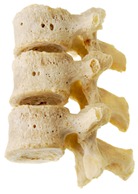The Institute of Medicine (IOM) recently released their assessment of current data on health outcomes as they related to calcium and vitamin D after being commissioned by the U.S. and Canadian governments. The new reference values, expressed Dietary Reference Intakes (DRIs), are based on an abundance of information and higher quality published studies than were available for the 1997 government values.
A committee of experts evaluated more than one thousand studies and reports as well as listening to testimony from scientists and others. This committee considered that studies about the health benefits beyond bone health were most often from studies that provided mixed results, inconclusive results, or were not from randomized controlled trials. Thus, these were not considered reliable. Their focus then was on the bone growth and bone maintenance data.
Their new Recommended Dietary Allowance (RDA) is now 600 IU per day for people ages 1 to 70 and 800 IU per day for those 71 and older. The old guidelines from 1997 were 200 IU per day through age 50, 400 IU per day for ages 51 to 70 and 600 IU per day for 71 and older. While I would consider these guidelines conservative to the extreme, (really a one year old and a 70 y.o. need the same amount????) they at least increased a new safe upper limit of 4,000 IU a day for those 9 years old and above, pregnant or not. The greatest concern I have with these guidelines is that they based their bone dosing guidelines on a target blood level of 20 ng/ml per day, rather than 30 ng/ml per day minimum published in most research about levels needed to suppress the parathyroid gland and avoid unnecessary bone loss.
Most practitioners and a studious group of consumers realize that there are scores of studies on other potential health benefits found in observational/epidemiological studies including colorectal cancer, breast cancer, select autoimmune disorders, cardiovascular disease and much more. It is too bad… that these were not considered, and once again, we may not have optimal prevention, risk reduction guidelines from our government agencies.
For a full list of the dosing guidelines by age group, gender, and pregnancy status, you can find these at www.iom.edu/vitamind


